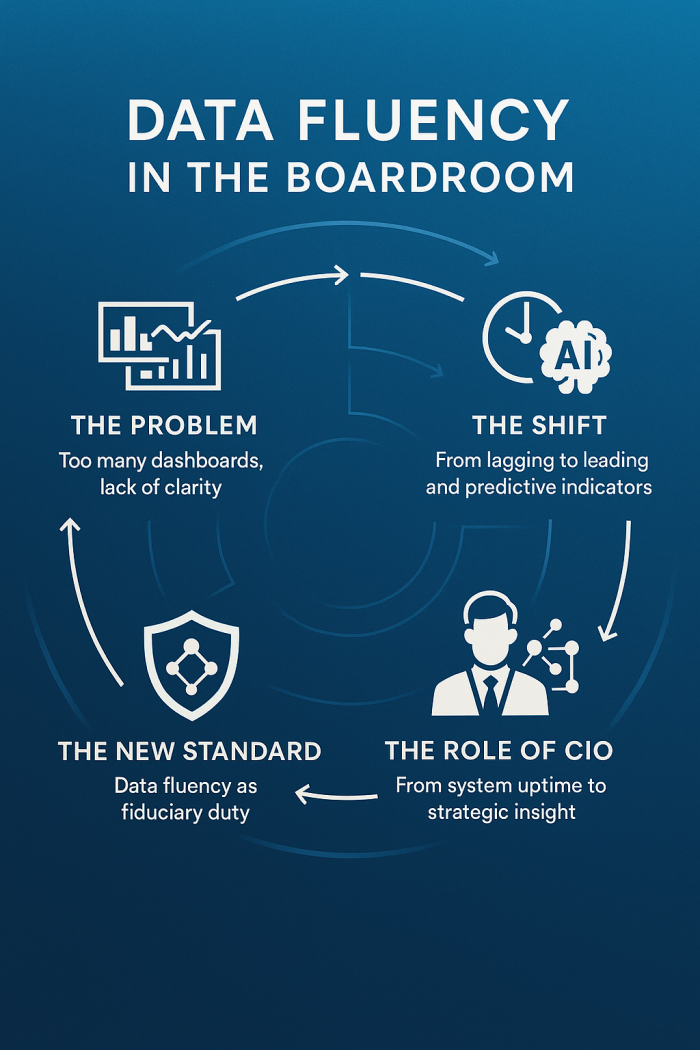The Boardroom Has a Data Problem
Executives today are overwhelmed with dashboards, KPIs, reports, and analytics tools—yet many still lack confidence in interpreting what the numbers truly mean. The issue is not the volume of data, but the ability to read and apply it fluently. In sectors such as mining and distribution, and indeed across all industries, boardrooms must evolve from being passive consumers of data to becoming skilled interpreters of it. Developing cross-functional coordination frameworks is rapidly becoming an essential board-level competence and a critical strategic requirement.
More Dashboards ≠ More Insight
Too often, leadership packs overflow with visuals but underdeliver on clarity. BI tools are deployed across departments, each with their own metrics, formats, and logic. What results is not transparency, but confusion. When one version of EBITDA differs from another, or maintenance cost trends vary by source, decisions stall. Executives need fewer dashboards—but better questions, cleaner definitions, and sharper focus. Studies on process innovation in Industry 4.0 show that clarity matters more than volume of visuals.
Lagging Indicators Are No Longer Enough
Most board-level reporting is built on lagging indicators: what happened last month, last quarter, last year. But in fast-moving, risk-prone industries, that’s too late. Leading companies are shifting toward leading indicators—real-time visibility on uptime, cost deviation, project variance, and safety exposure. And beyond that, predictive indicators: early warnings powered by AI and analytics that inform rather than explain. Frameworks for creative problem-solving in supply chains illustrate how predictive thinking can prevent issues before they escalate.
Real-Time Context for Strategic Oversight
Imagine being able to see, in a single view, the financial burn rate of each project, the maintenance backlog per region, the procurement delays across vendors—and what it means for the next 60 days. That’s the promise of data fluency: not just access to numbers, but access to meaning. Boards must move from post-mortem analysis to dynamic guidance, driven by contextualized intelligence. A process innovation re-engineering model shows how timely data prevents costly mistakes.

From Interpretation to Action
Data fluency isn’t about looking smart—it’s about acting smart. When directors understand the story behind the KPIs, they can ask better questions, pressure test assumptions, and guide transformation. It’s not about knowing how to build dashboards—it’s about knowing what matters, what’s missing, and what’s next. Data is only valuable when it sharpens decision velocity. The use of design thinking in business and management can help directors shape sharper and more actionable questions.
The Role of the CIO Is Changing
Historically, CIOs reported on uptime and system performance. Today, they’re being asked to architect executive insight. Boards increasingly look to IT leaders not just to support operations—but to deliver the frameworks that translate data into strategic foresight. This shift requires CIOs to speak the language of finance, operations, and governance—not just infrastructure. Adopting process classification frameworks helps CIOs bridge technology and strategy effectively.
Data Fluency Is Now a Fiduciary Standard
Boards are responsible for oversight of capital, risk, and strategic direction. Without clear, timely, and trustworthy data, that responsibility cannot be fulfilled. Data fluency is not a bonus—it’s a fiduciary necessity. Forward-thinking boards will treat data literacy the way they treat financial literacy: a non-negotiable skillset that drives informed, ethical, and accountable leadership. By leveraging supply chain innovation practices, boards can anticipate risks and guide organizations with greater foresight.
